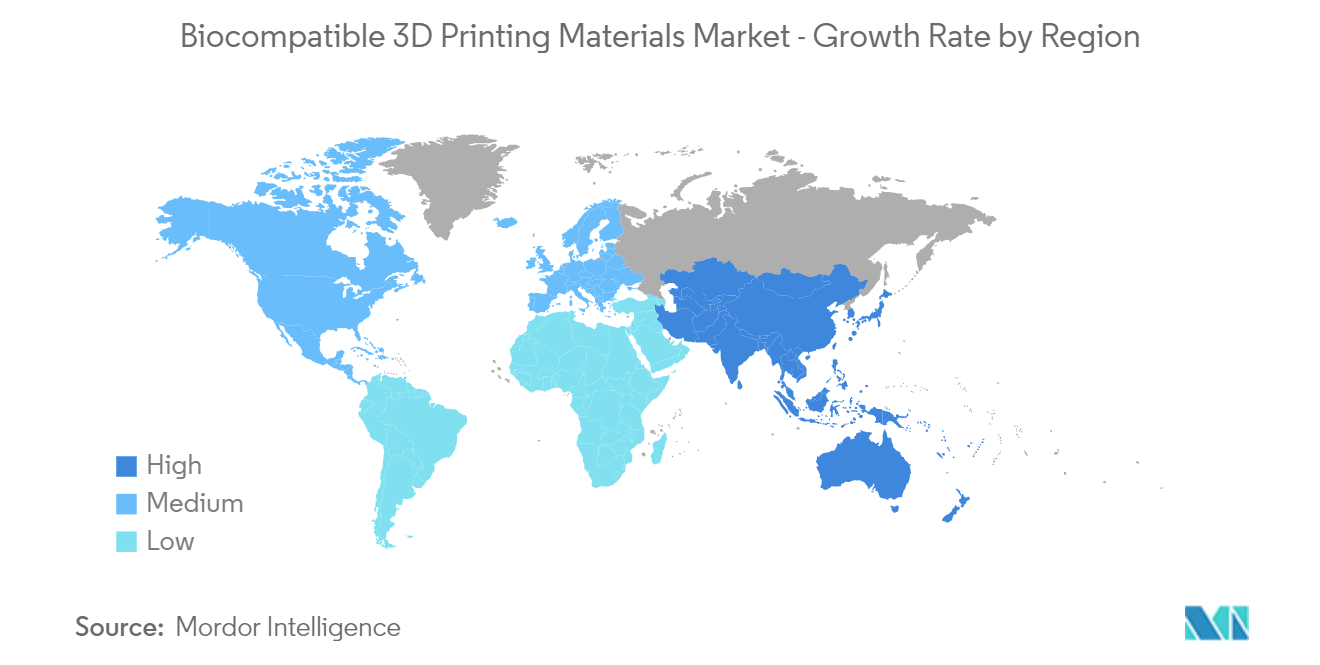Market Trends of Biocompatible 3D Printing Materials Industry
The Implants and Prosthesis Segment is Expected to Witness Significant Growth During the Forecast Period
Biocompatible 3D printing materials offer the advantage of customization. They allow implants and prostheses to be tailored to the individual patient's needs, resulting in better fit, improved functionality, and enhanced patient satisfaction. The flexibility and versatility of biocompatible 3D printing technology have revolutionized the field of implantology and prosthetics, providing innovative solutions for various medical conditions and patient-specific requirements. Technological advancements in 3D printing technology and increasing demand for implants are key factors propelling segment growth.
Several companies and startups are developing new technologies. For instance, in November 2022, the Indian Institute of Science (IISc) and deep-tech hardware firm Prayasta developed a 3D printer for implant-grade silicon. The two organizations worked collaboratively to accelerate the transition of customized soft tissue implants from research to commercialization. The business is conducting animal experiments on 3D silicon implants before beginning the clinical trial. In addition to implants, they have created external prostheses and plan to commercialize them.
Furthermore, in March 2023, Invibio Biomaterial Solutions launched its PEEK-OPTIMA AM Filament, an implantable PEEK polymer for additive manufacturing. The device benefits medical device manufacturers as they assess the FFF/FDM route of additive manufacturing to help support medical device developments, such as CMF devices and spinal and orthopedic implants. Such advancements from the new companies will likely contribute to the segment's growth in the coming years. Similarly, in April 2023, Curiteva launched a 3D-printed spinal implant developed via the Inspire platform. The Inspire platform was designed with a patented fused fluid fabrication 3D printer.
Hence, with the launch of such implants and prosthesis products using 3D printing technology and biocompatible material, the segment is expected to grow considerably during the forecast period.

North America is Expected to Hold a Significant Market Share During the Forecast Period
North America is expected to hold a significant share of the biocompatible 3D printing materials market, which is majorly due to the high adoption of technology, increasing focus on the development of the healthcare industry, and the presence of biomaterial manufacturers in the region.
The increasing number of new product launches in the 3D printing space drives the demand for 3D printing materials. For instance, in April 2023, 3D printer original equipment manufacturer (OEM) Stratasys and Ricoh partnered to provide on-demand 3D printed anatomic models for clinical settings. Medical personnel can quickly plan and perform complex operations with the help of Stratasys' patient-specific 3D solutions, improving communication between the care team, the patient, and their family. With such new developments in 3D printing, the demand for 3D printing materials will likely boost in the coming years.
Also, 3D printing is gaining significant attention in the United States, contributing to market growth. For instance, in October 2023, SprintRay Inc., a company focused on digital dentistry and dental 3D printing solutions, launched its OnX Tough 2, one of the 3D printing resins with fixed, implant-supported denture prosthetics. The United States and Canada are home to several prominent biocompatible 3D printing material companies. These companies are involved in the manufacturing, distributing, and developing of biocompatible materials and associated technologies. Examples of such companies include Stratasys, 3D Systems, Formlabs, Carbon, and EnvisionTEC.
Therefore, with the increasing number of new product launches and the presence of biocompatible 3D printing material manufacturers, North America is expected to hold a significant share of the market.


